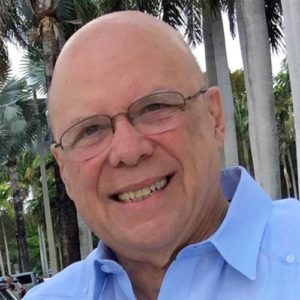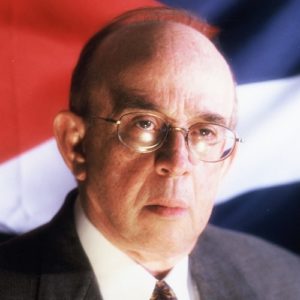On August 12, 1933, with the Cuban army’s support, the U.S. Ambassador Benjamin Sumner Welles, presented Gerardo Machado a plan for his resignation as President of Cuba. A defiant dictator visited the Columbia Military barracks where he found that he had lost the support of the Army and had to resign. That afternoon Machado left the Presidential Palace and flew to Nassau in the Bahamas.
Eight years before, Machado’s political fortune was on the rise when on May 20, 1925, he was elected Cuba’s fifth president and the Cuban Republic was 23 years old and seemed to be moving in the direction of political stability and economic growth. Machado won the presidency on a platform of national regeneration under the slogan “water, roads and schools.” He called for an end to the Platt Amendment and improved health care. During the War of Independence, Machado fought mostly in the Santa Clara region, where he rose through the ranks to brigadier. After the war, Machado briefly held various government positions and later became manager and vice president of the Cuban Electric Company, the largest utility company in Havana.
Machado’s first three years in office were probably the most successful of the Cuban Republic. Several aqueducts were built to supply the water needs of major cities; a vast program of road construction got underway, creating thousands of jobs, and a modern communication system that opened new agricultural and industrial markets. Completion of the Central Highway, finally linking Havana and Santiago de Cuba, was the culmination of Machado’s successful road network program.
Education improved with the addition of new classrooms in the public-school system and several vocational-technical schools through the island. Teacher salaries were raised, and the University curriculum modernized, with an emphasis on science and engineering. The Machado administration also developed an urban renewal program, paving streets and improving the sewer system of major cities. Havana’s Malecon (boardwalk) was widened and extended to its present splendor as a majestic water front boulevard. The “escalinata” or stairs leading to the University’s Alma Mater square and Capitol building were constructed in Machado’s first term.
During the first two years of his administration, he was named “favorite son” of 25 municipalities, and, in a shameless showing of adulation, journalists called him “El Supremo,” “El Titán,” and “El Egregio.” An unfortunate syndrome of flattery and adulation on segments of our public that returned 32 years latter with Fidel Castro, who, by 1959 was being referred to as “El Caballo,” “El Jefe,” and “El Maximo Leader.”
By 1927, Machado had stirred up nationalistic fervor and a sense of confidence in the ability of Cubans to govern themselves. Commenting on Machado’s charisma, professor Luis Aguilar Leon said: “Considering the immediate past of Cuba and the spectacular programs and actions of the new government, it was no wonder that Gerardo Machado became, after a few months in power, the most popular president the island ever had.” It is difficult to measure the impact of the intense respect on the Machado sequel. By 1927, the president had decided to remain in power believing himself indispensable to Cuba’s welfare.
The pro-Machado congress extended Machado’s term in office (la prórroga de poderes) for two more years, agreed to call elections for a Constituent Assembly to consider revising the 1901 Constitution and extend the president’s term in office to six years without reelection. In April 1928, the newly elected Constituent Assembly approved the reforms proposed by Congress and solemnly declared: “The Constitutional Convention does not hesitate to reaffirm that General Gerado Machado y Morales, because of his commitments and his antecedents as founder of the Republic, is faced with the inevitable obligation of accepting a new presidential term.” Machado accepted and was reelected. His term, which began May 20, 1929, would run until May 1935.
The “prórroga de poderes” was an unpopular political move, specially among the Cuban youth. By 1933, the rejection to Machado had turned violent. In addition, Cuba’s successful economic fabric began to fall apart as the U.S. economy sank into depression.
Hardest hit was the Cuban sugar industry whose share of the U.S. market dropped from 51.9% to 25.4% in 1933 sending over 240,000 heads of household into unemployment. By this time most opposition groups were engaged in urban terrorism and the use of explosives and political assassination became common practices.
As the level of violence increased in the island, the Roosevelt administration decided to send a political mediator to work out a peaceful settlement. Benjamin Sumner Welles, an influential diplomat and close friend to President Franklin Roosevelt, was appointed U.S. Ambassador in Havana. But pragmatic solutions were not options to a nation caught in a fiercely emotional political struggle and pulled by an intense nationalistic feeling. The island was ripe for dramatic social and political change.
The end of the dictator was ignited by a minor labor dispute. On July 25, 1933, Havana bus drivers went on strike protesting a municipal tax increase. The strike turned into a political confrontation that escalated when streetcars operators (tranvias) and taxi drivers joined the protest. Capital transportation came to a halt. By August 1, it had spread to other labor sectors and grown into a general strike.
Machado called for a meeting with the communists perceived by the dictator to be the leaders of the strikes. Machado offered them legal recognition and state support. Rubén Martínez Villena, and Joaquín Ordoqui met with Machado and accepted the offer. The communists called off the strike but failed. It turned out to be the agreement of the impotent, since neither party had the strength to control the mounting crisis.
On August 6, rumors that Machado had resigned swept the capital. Thousands of people went out to celebrate and were gunned down by the police. Twenty-two were killed and more than seventy wounded.
On August 12, trying to promote a peaceful transition of power, the Army requested Machado’s resignation and the dictator fled to the Bahamas.
With the news of Machado’s departure, the people went wild with enthusiasm, but the economy was prostrated, and members of the revolutionary organizations roamed the streets with weapons in hand. Army morale was low with officers’ future uncertain and afraid to restore order. The old political parties were discredited, and a new era of social justice and national sovereignty was dawning. The fall of Machado had unleashed the 1933 Revolution.
* Pedro Roig is Executive Director of the Cuban Studies Institute. Roig is an attorney and historian that has written several books, including the Death of a Dream: A History of Cuba. He is a veteran of the Brigade 2506.









